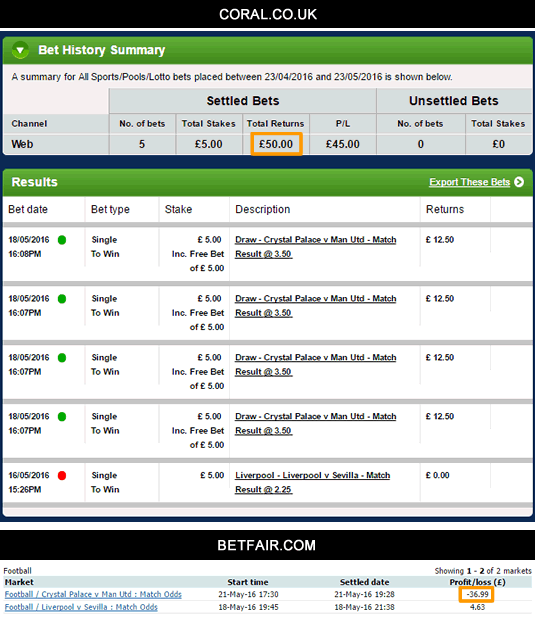Lay betting is simply betting that something won't happen. In horse racing, laying a horse is picking a horse to lose a race. Unlike traditional betting where you back a horse to win, laying a horse means that you assume the role of a bookmaker – if the horse loses you win, but if the horse wins you pay out. A lay bet is a process where, in making 2 separate transactions, a bettor can minimise risk and potentially maximise profit off an original bet. This technique can be used for a variety of reasons, including minimising risk when odds change, or to place qualifying bets with sportsbook in order to receive promotions in the future. When you place a lay bet on a horse, you're betting that the horse won't win an event. If any other horse wins, your bet wins. Often it can be profitable to lay the favourite for a race – the odds will offer the best value and you have a greater statistical chance of winning a lay bet than a back bet.
In recent years, online sports betting and betting on horses have drastically changed. With the introduction of betting exchanges like Betfair, a true capitalistic system has been developed for punters all over the world. Before we discuss the lay betting process, it's really important for anyone who is interested in such action to take the time necessary to under the risks/rewards of lay betting before jumping into the deep end of the pool.
What is Lay Betting?
Most Internet punters bet sports and horses with their favorite betting sites. When they make their bets, they are essentially agreeing to do so at the odds as stated by the online bookmaker. Horse racing fans are either excepting fixed odds or putting their money into a pari-mutual pool. In both cases, they get what they get as far as odds are concerned.

Lay betting offers another option. Should a punter feel they are knowledgeable enough to make their own own lines or odds, they can join one of several betting exchanges. Betting exchanges allow their customers to act as bookies and make their own lines for offer to other customers. The exchanges stake in the entire process is a commission on the lay bettor's profits (usually 5%).
As lay betting relates to horse racing, the punter is essentially betting on horses to lose. While that may seem easier than picking a winner, it comes with significant risks. The lay bettor's task is to develop a line on a horse or group of horses at odds they deem as fair. As long as there's a customer who is willing to accept the prescribe odds for the amount being offered, the wagered can be consummated.
If the target horse loses, the lay bettor collects the amount of the bet minus the exchange's commission. If the horse wins, the lay bettor has to pay the customer the amount of the bet times the stated odds.
The Pros and Cons of Lay Betting on Horses
The risks related to lay betting should be clear. If the lay bettor offers a horse at high odds and the horse wins, the lay bettor loses a lot of money for the chance to win a smaller portion. That's not always a wise decision.
The rewards are usually smaller than the inherent risks, but there are wagering advantages for the lay bettor. If they can lay numbers on several horses in the same race, there's a chance the money collected might exceed any potential payout, regardless of which horse wins. This would be similar to the lay bettor simply collecting commission with no real risks. This is a good alternative for the horse player, who fancies themselves as an astute handicapper.
The Spread Strategy

Lay betting offers another option. Should a punter feel they are knowledgeable enough to make their own own lines or odds, they can join one of several betting exchanges. Betting exchanges allow their customers to act as bookies and make their own lines for offer to other customers. The exchanges stake in the entire process is a commission on the lay bettor's profits (usually 5%).
As lay betting relates to horse racing, the punter is essentially betting on horses to lose. While that may seem easier than picking a winner, it comes with significant risks. The lay bettor's task is to develop a line on a horse or group of horses at odds they deem as fair. As long as there's a customer who is willing to accept the prescribe odds for the amount being offered, the wagered can be consummated.
If the target horse loses, the lay bettor collects the amount of the bet minus the exchange's commission. If the horse wins, the lay bettor has to pay the customer the amount of the bet times the stated odds.
The Pros and Cons of Lay Betting on Horses
The risks related to lay betting should be clear. If the lay bettor offers a horse at high odds and the horse wins, the lay bettor loses a lot of money for the chance to win a smaller portion. That's not always a wise decision.
The rewards are usually smaller than the inherent risks, but there are wagering advantages for the lay bettor. If they can lay numbers on several horses in the same race, there's a chance the money collected might exceed any potential payout, regardless of which horse wins. This would be similar to the lay bettor simply collecting commission with no real risks. This is a good alternative for the horse player, who fancies themselves as an astute handicapper.
The Spread Strategy
The advent of betting exchanges has made it possible for punters to play or back bet a horse at fixed odds while laying the horse at lower odds on the exchange. This strategy is always available for astute punters who have the time to track odds. Let's run through a spread strategy example.
Let's say on track bookmakers are offering horse A at fixed odds of 10-1. The punter makes a wager at those odds for $100AUS. Now they go to their betting exchange account and play a lay bet on the same horse for the same $100AUS at 9-1. Let's say a betting exchange custom accepts that wager. The lay bettor has effectively bet the horse to both win and lose. However, they stand to profit with very little risk. How so?
Back And Lay Betting Sites
If horse A wins, the punter wins $1,100AUS (the $100AUS amount wagered + the winnings at 10-1) from the bookmaker. On the betting exchange, they pay the back bettor $1,000AUS (the $100AUS wagered + winnings at 9-1). They collect $1,100AUS, pay $1,000AUS for a net profit of $100AUS).
If horse a loses, they lose $100AUS to the bookmaker and collect $95AUS ($100 less 5% commission) on the betting exchange for a net loss of $5AUS.
By using the spread, they risk the $5AUS for a chance to win $100AUS. That's 20-1 odds on a horse that was listed at 10-1. That creates a significant spread that could be financially rewarding over an extended period of time.
You might wonder why a punter would bet on a horse at 9-1 on the exchange when the same horse is available at 10-1 on track. Well, not everyone can make it to the track and most most bookmakers use pari-mutual pools, which might be offering odds that are less than 9-1. In such cases, settling for the 9-1 makes sense.
Again, lay betting comes with risks. The lay bettor needs to have an understanding of odds and know how to minimize risks in order to show a regular profit.
About the Author: Daryl CurnowBack Lay Betting Sites In India
After graduating from the University of Auckland (BA – English), Daryl was thrown into the world of sports and horse racing journalism.
Having worked as a racing journalist for two years, he decided to move into the online world of horse racing and sports writing. After years of honing his craft, Daryl became a professional punter in 2009 – with a focus on horse racing, NRL, AFL, NBA, Rugby, NFL, and US college sports. Daryl's tips have been featured on various websites around the world before joining the GoBet team. When he's not working, Daryl tries to avoid making bogeys on the golf course.

